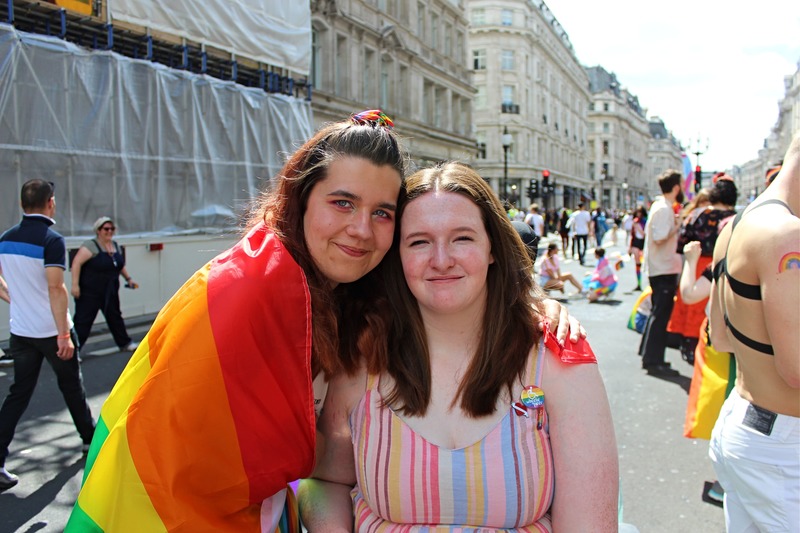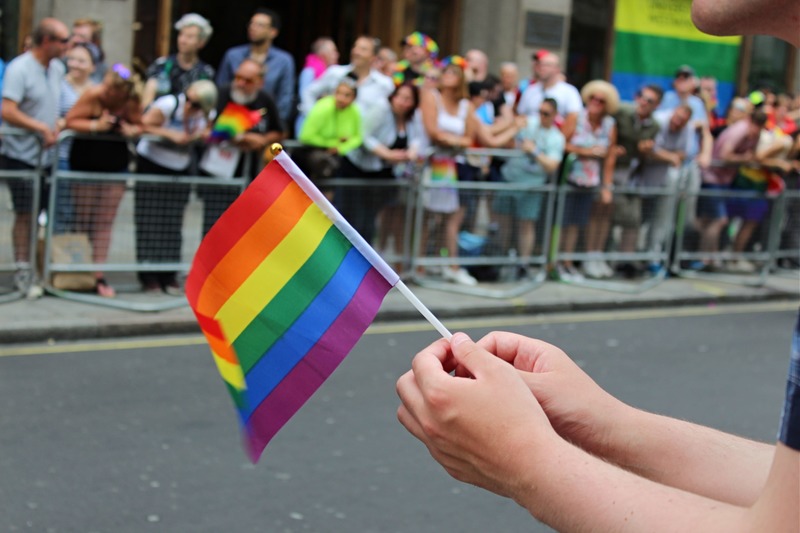This LGBTQ+ Pride Month, I'm Worried About Accessibility, Again
As a Queer Disabled woman, I'm proud of my identities in equal measure; they all impact and influence each other. When I'm celebrating one part of my identity, I never want to hide the different sides of me to be part of a community. But, with Pride Month here, I am once again worried about how the LGTBQ+ community often wishes to pretend that my disability doesn't exist.
Pride month is a chance to celebrate, reflect on our history, and look towards the future. But, when I look back at Queer history, I struggle to see Queer Disabled people represented or talked about. We feel hidden away. It's only been in the last few years that I can say I have seen a positive representation of LGBTQ+ Disabled people in the media. When I was figuring out my sexuality, I looked at the community and truly believed I couldn't be Queer because I was already disabled; I'd ticked my diversity box. So the impact of being unable to see yourself reflected in the world around you is massive.

The struggles only continue after this too. Coming out can be such a big step in your journey, so imagine how it feels to join your new community only to find out that it's not an accessible environment for you. I remember my first time attending London Pride. I was buzzing to be surrounded by my community finally, to feel welcomed and a part of something bigger. However, just navigating the streets of London with all the barriers in place was an access nightmare for a wheelchair user.
Dropped kerbs were blocked all over the place, meaning I constantly had to go back on myself, wasting energy, time and my powerchair battery. By the time I got to the parade, I was thoroughly demoralised. I experienced people leaning on my wheelchair, bumping into me and generally treating me like I was invisible. I cut my day short in the end. Everyone had said how amazing Pride can be and how welcoming the community is, but I left feeling like there was no place for me in it.
When I returned to London Pride a few years later, this time proudly holding hands with my partner, I hoped that things would be better. However, I continued to run into the same problems. This time, though, when we spotted a dropped kerb blocked by a barrier, an access steward was nearby. I was so happy to see that there was someone I could go to with access queries and problems, but the interaction that followed was so disappointing. When we asked if the barrier could be moved, we were met with a firm 'no'. This event was mine and my partner's first Pride together, I wanted it to be something we could look back on with joy, but unfortunately, many of the memories are of the inaccessibility of the day.

We often think about the LGBTQ+ community as being very welcoming and understanding of discrimination, but when it comes to disability and accessibility, we still get it so wrong. Things are slowly improving, but I feel like I'm sitting on the outskirts of a community. I firmly should be part of it. I want to celebrate my queerness, but I can't leave my disability at the door, which seems to be a problem when accessing my community and events.
It often feels like accessibility is the lowest priority if thought of at all, when organising pride events or opening a Queer venue. In London, many of our bars and clubs are underground, driven by the need for them to be hidden in the past due to homophobia and restrictive laws. However, it's time for us to make a concerted effort to make these venues accessible to all. The LGBTQ+ community isn't just for white, cis, non-disabled men. The beauty of our community is that we are diverse in every possible way, from race to religion, gender to disability. But our spaces, events, and representation in the media don't reflect that.

The rise of social media has helped me feel more connected to my community on a digital level. I scroll through my Instagram now, seeing people like me. I can relate to them and feel safe being myself without the risk of experiencing ableism. I hope this will eventually transfer into everyday life and the events I would love to attend this Pride month. I hope I won't feel nervous one day about interacting with the LGBTQ+ community because we all deserve to be who we are without fear of discrimination.
Shona Louise is a writer, photographer, access consultant, small business owner, and theatre enthusiast.
With by-lines in Metro, The Independent, DigitalSpy and more, Shona regularly writes about disability rights and accessibility across the media. She features in Rife: Twenty-One Stories From Britain’s Youth, a book made up of young people’s stories and experiences, with her essay centering on growing up as a young disabled adult.
Shona is also a portrait, theatre and live events photographer over at Shona Louise Photography. She has a passion for watching and capturing theatre, alongside working in the theatre industry as an access consultant to improve access for disabled people.

